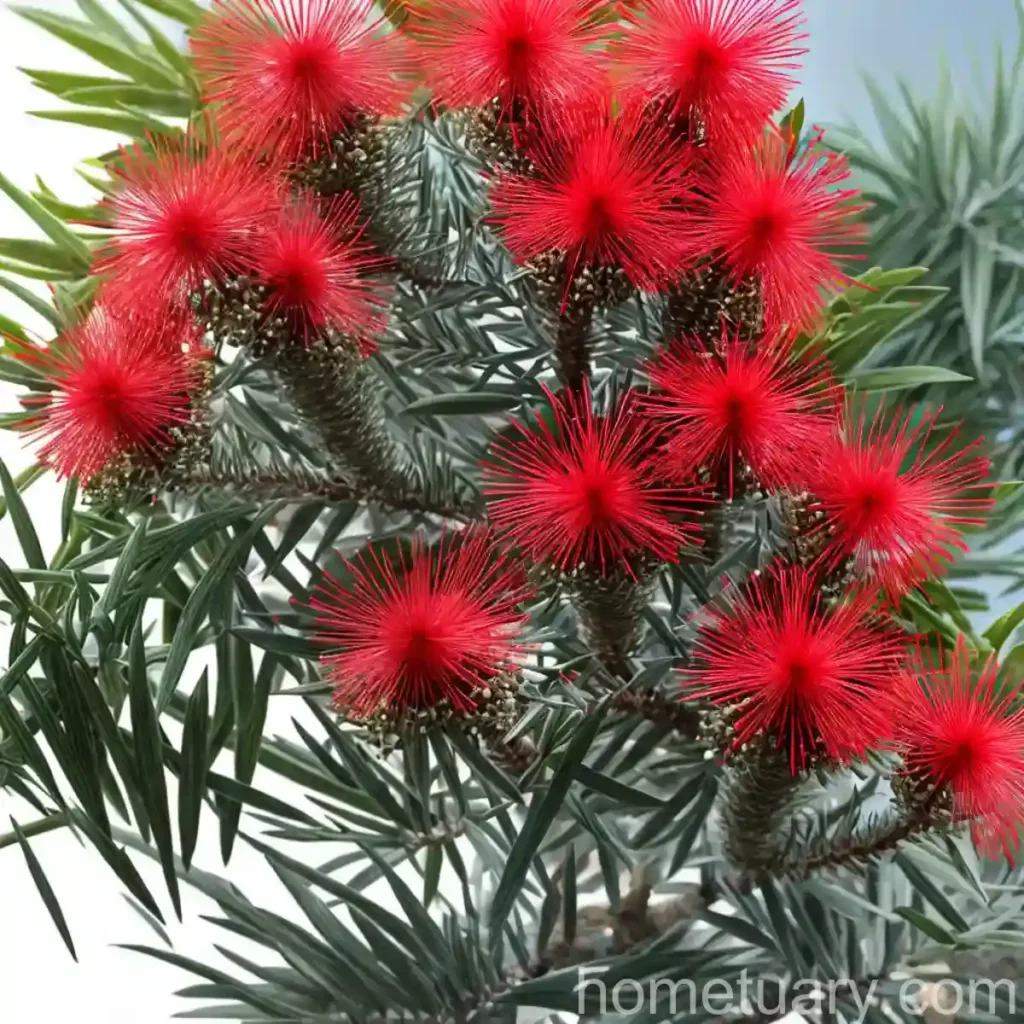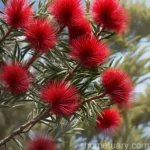Bottlebrush Bush (Callistemon acuminatus): A Comprehensive Guide
Introduction
In the world of ornamental plants, few species are as eye-catching and versatile as the bottlebrush bush, scientifically known as Callistemon acuminatus. This native Australian plant is renowned for its striking red bottlebrush flowers, which have captivated gardeners and nature enthusiasts worldwide. Not only are these shrubs visually appealing, but they also contribute to wildlife-friendly landscapes, making them an essential addition to any garden or landscape design. In this comprehensive guide, we will delve into the culture, uses, care, and maintenance of the bottlebrush bush, exploring its role as an evergreen ornamental plant and a valuable member of the Australian flora.
What Is the Bottlebrush Bush (Callistemon acuminatus)?
The bottlebrush bush, Callistemon acuminatus, is a species of flowering shrub belonging to the Myrtaceae family. This evergreen shrub is characterized by its distinctive red bottlebrush-shaped flowers, which bloom in dense cylindrical spikes, attracting pollinators and adding a vibrant touch to the landscape. The plant’s foliage consists of narrow, lance-shaped leaves, contributing to its dense and bushy appearance. C. acuminatus is native to Australia, particularly found in the coastal regions and rainforest areas, where it thrives in a variety of environmental conditions. Due to its adaptability and striking aesthetic appeal, the bottlebrush bush has gained popularity not only in its native Australia but also in gardens and landscapes around the world.
Key Takeaways – Bottlebrush Bush (Callistemon acuminatus)
Before delving into the specific care and maintenance aspects of the bottlebrush bush, let’s highlight the key takeaways that characterize this remarkable plant.
-
Bottlebrush Shrub: Callistemon acuminatus is commonly referred to as the bottlebrush shrub due to its unique red flowers that resemble traditional bottle brushes.
-
Native Australian Plants: As a native Australian plant, the bottlebrush bush holds significant cultural and ecological importance, contributing to indigenous Australian gardens and landscapes.
-
Evergreen Shrubs: The bottlebrush bush is an evergreen shrub, providing year-round visual interest and maintaining its foliage throughout the seasons.
-
Wildlife-Friendly Plants: These shrubs attract a variety of pollinators, birds, and other wildlife, making them valuable additions to wildlife-friendly landscapes.
-
Drought-Tolerant Plants: The bottlebrush bush exhibits a remarkable tolerance to drought conditions, making it an ideal choice for xeriscaping and water-wise gardening.
-
Low Maintenance Plants: As hardy and resilient plants, bottlebrush bushes require minimal maintenance once established, adding to their appeal in landscaping and garden design.
-
Red Bottlebrush Flowers: The striking red flowers of the bottlebrush bush are a defining feature, making them a favorite among gardeners seeking showy and colorful blooms.
Culture
Understanding the cultural requirements of the bottlebrush bush is essential for fostering its growth and ensuring its well-being in garden and landscape settings. From watering needs to soil preferences, the cultural aspects of Callistemon acuminatus play a crucial role in its successful cultivation.
Uses
As one of the most popular ornamental plants in Australian and international landscapes, the bottlebrush bush serves a multitude of purposes, ranging from purely aesthetic to ecological and practical applications. Understanding the diverse uses of this plant can provide valuable insights for gardeners and landscapers.
Water
Proper watering is a critical factor in maintaining the health and vitality of the bottlebrush bush. While it exhibits drought tolerance, understanding its water requirements is essential for promoting strong growth and prolific flowering.
Sunlight
Appropriate sunlight exposure is crucial for the overall performance of the bottlebrush bush. Understanding its sunlight preferences and requirements enables gardeners to create optimal growing conditions for these vibrant shrubs.
Fertilizer
Providing essential nutrients through fertilization can significantly contribute to the vigor and blooming capacity of the bottlebrush bush. A well-balanced fertilization regimen can support the plant’s growth and overall health.
Soil
The composition and quality of the soil directly impact the growth and development of the bottlebrush bush. Understanding the soil preferences of C. acuminatus is essential for creating a conducive growing environment.
Pruning
Proper pruning practices are instrumental in shaping the bottlebrush bush, promoting flower production, and maintaining its overall health and appearance. Effective pruning techniques can help manage the size and form of these shrubs, contributing to their aesthetic value in landscapes.
Propagation
The propagation of the bottlebrush bush allows gardeners and horticulturists to expand their plant populations and introduce new individuals into the landscape. Understanding the various methods of propagation is essential for successful plant propagation.
Container Popularity
The bottlebrush bush’s adaptability to container gardening makes it a popular choice for small gardens, patios, and urban landscapes. Understanding the nuances of container gardening with C. acuminatus is essential for maximizing its decorative and ornamental potential in containers.
Container Common Diseases
While relatively resilient, bottlebrush bushes are susceptible to certain diseases that can impact their growth and appearance. Understanding these common diseases and their appropriate management strategies is essential for preserving the health of the plants.
Disease Diagnosis
Prompt diagnosis of potential diseases affecting the bottlebrush bush is key to implementing effective control measures and preserving the plant’s well-being. Understanding the symptoms and signs of common diseases is essential for accurate disease diagnosis.
Common Pests
Like many plants, bottlebrush bushes can fall prey to various pests that can affect their growth and vitality. Recognizing common pests and implementing appropriate pest management strategies is essential for maintaining healthy plants.
Botanist’s Tips
Professional insights and recommendations from botanists and plant scientists can offer valuable guidance for the successful cultivation and management of bottlebrush bushes. Expert tips can help gardeners optimize their growing practices and enhance the performance of Callistemon acuminatus.
Fun Facts
Exploring the fascinating and intriguing aspects of the bottlebrush bush can provide a deeper appreciation for this iconic plant. From its ecological roles to its cultural significance, discovering fun facts about Callistemon acuminatus adds to the allure of this captivating shrub.
Links to External Resources
To further enrich our understanding of the bottlebrush bush and its significance in horticulture and ecology, let’s explore a curated selection of external resources and references that offer valuable insights and information about Callistemon acuminatus.
Conclusion
In conclusion, the bottlebrush bush (Callistemon acuminatus) stands as a remarkable example of an evergreen ornamental plant with significant cultural, ecological, and aesthetic value. By delving into its cultural requirements, uses, care, and maintenance, we gain a holistic understanding of this iconic shrub, allowing us to appreciate its unique charm and integrate it effectively into diverse landscapes and gardening settings. With its wildlife-friendly nature, vibrant aesthetic appeal, and low maintenance characteristics, the bottlebrush bush continues to captivate gardeners, landscape designers, and nature enthusiasts, cementing its status as a cherished and versatile member of the plant kingdom.















